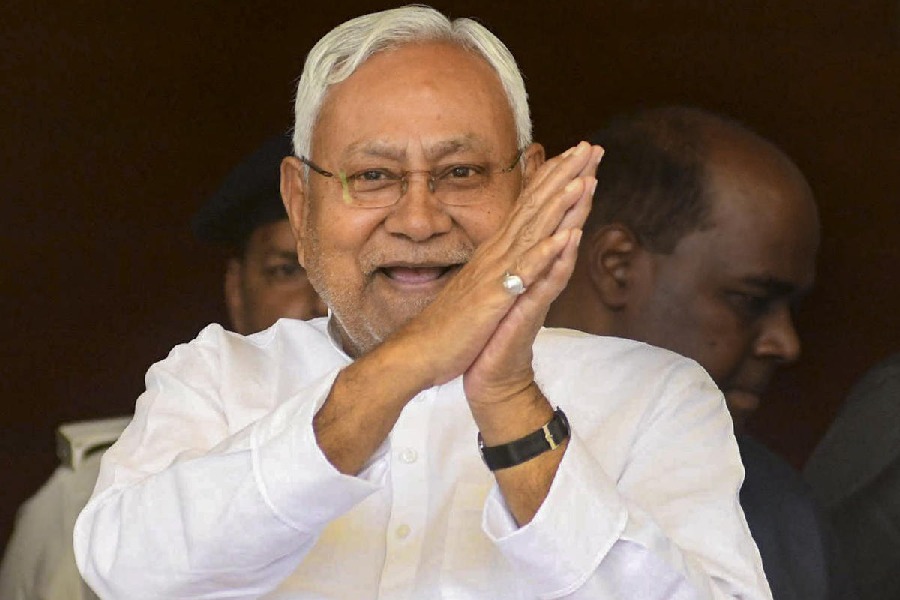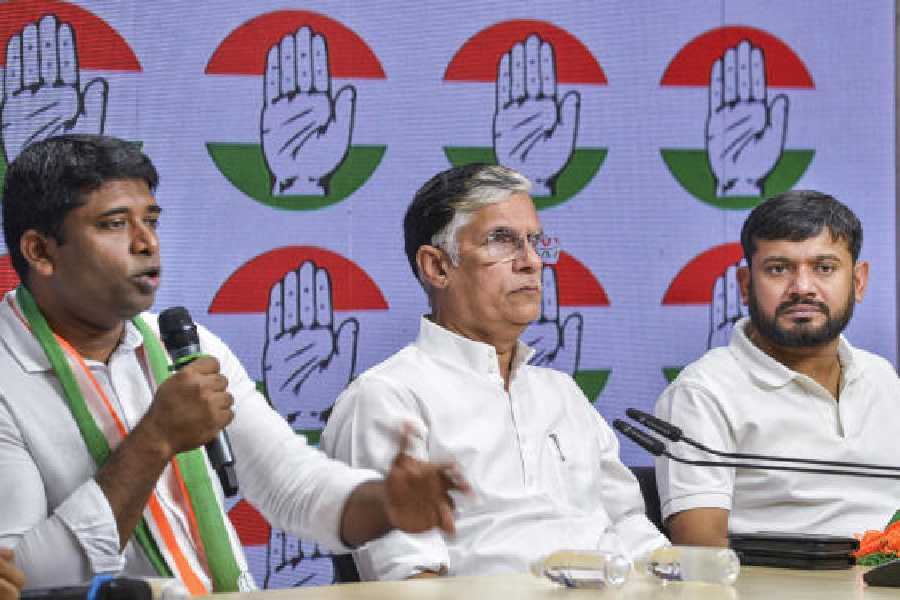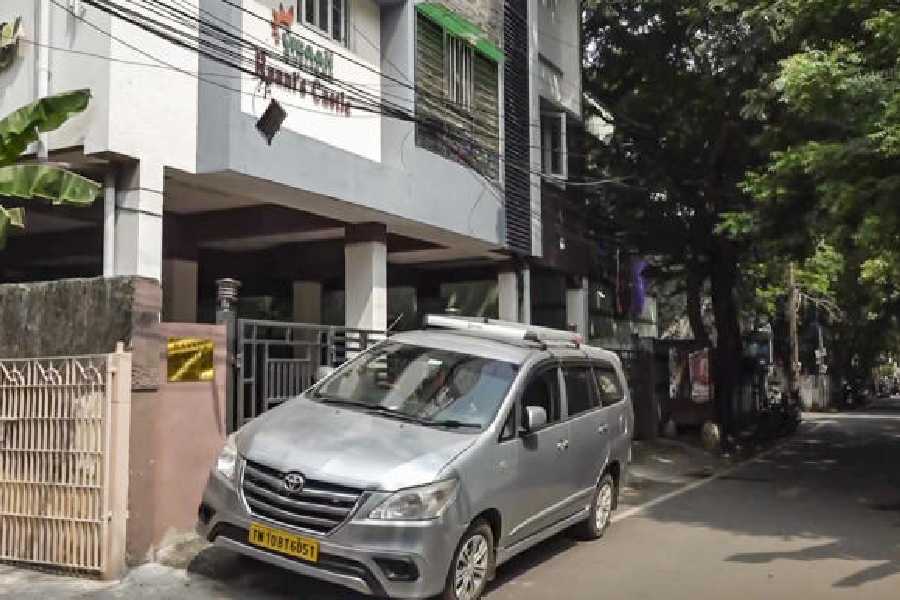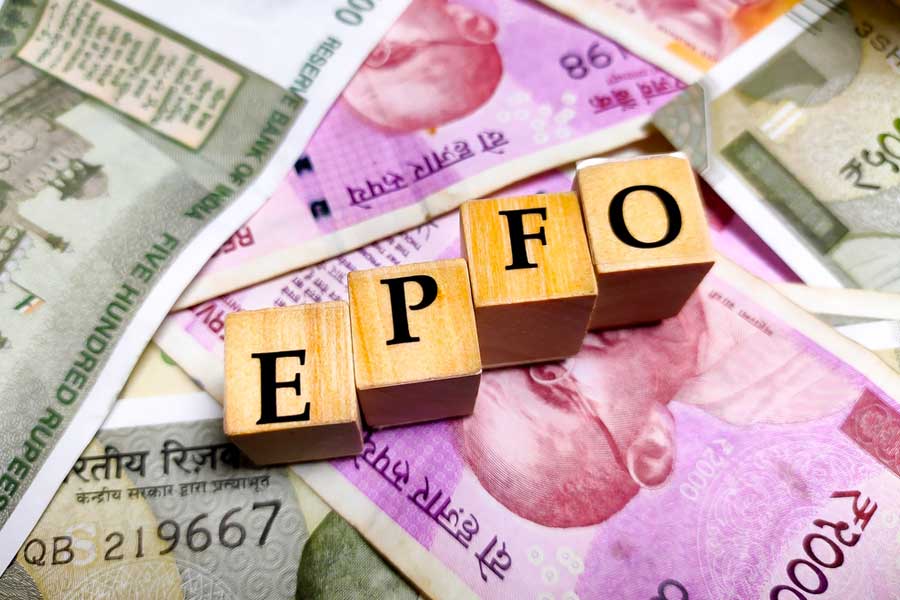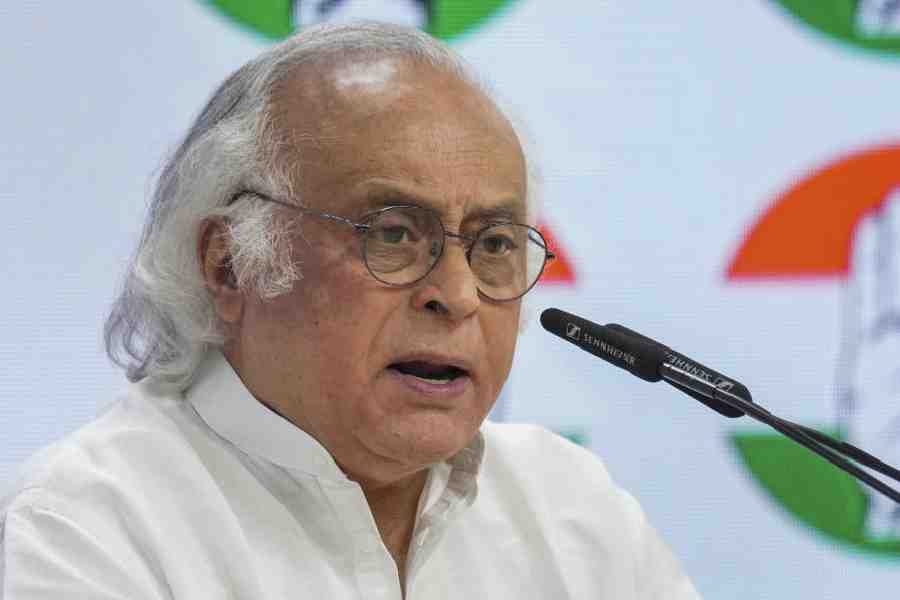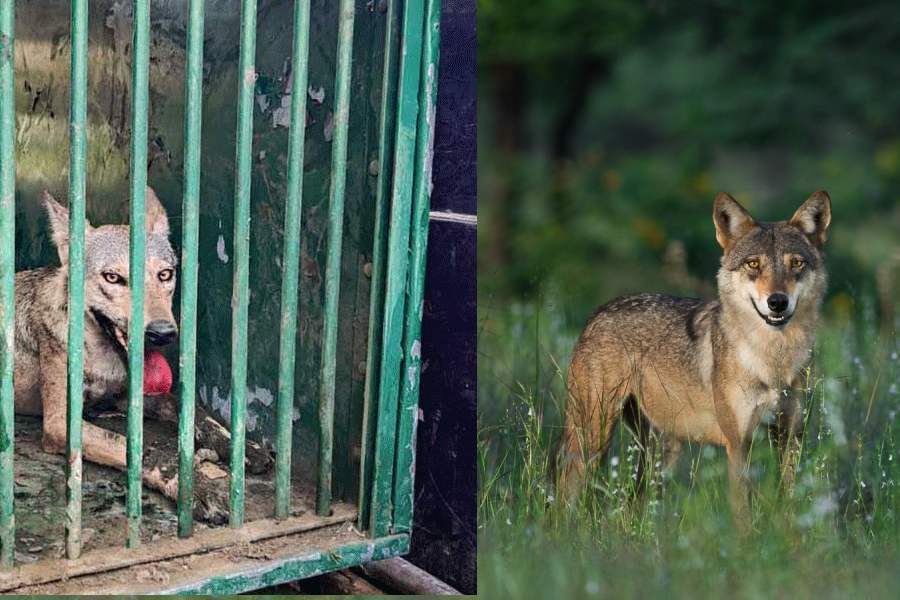The road winds up on the way to Phong village, overlooking a lush green valley with orange citrus trees and colourful orchids. A five-minute walk down a narrow path leads to a small, freshly painted house perched atop a slope.
Kamala Dahal steers you to the spot that's the pride of the family. It's their new toilet.
Till very recently, the family trudged half a mile from their home to use the fields to defecate. The women often waited for the sun to set to do so. Their neighbours in the south Sikkim village faced similar problems. But today toilet tales are the new rage in Phong.
And it's not just Phong either. Across the tiny northeastern state, there is a sense of pride. Last month, it became the first state in the country to have 100 per cent sanitation — that is, a toilet in every home. 'There is no stench in the air now,' Dahal says. 'We ail less too,' the 46-year-old homemaker adds.
Very quietly, Sikkim is making news. Full sanitation was just one of the goals the state chalked out for itself. Chief minister Pawan Chamling promises that in two years Sikkim will shed poverty — that is, nobody will earn less than Rs 930 a month in rural areas or Rs 1,226 in urban areas.
Kerala, Goa and Himachal Pradesh have made their marks as states with enviable health, literacy and economic yardsticks — now Sikkim is basking in the sun as the new kid on the development block.
'Despite the disadvantages posed by geographical and topographical constraints, socio-economic indicators in Sikkim have improved considerably,' stresses Pratap Ranjan Jena, associate professor, National Institute of Public Finance and Policy, a New Delhi-based think-tank.
Sikkim has some advantages over other states. It is the least populated state and the smallest after Goa. It also enjoys 'special' category status with other northeastern states — and Uttarakhand, Himachal Pradesh, and Jammu and Kashmir — which gives it financial benefits.
The state follows the North East Industrial Investment Promotion Policy, 2007, which provides incentives for investment in the state. As a result, the region's states get a higher share in resource allocation and excise duty concessions for industry. They also get 90 per cent of plan assistance as a grant and 10 per cent as loan, as against the 30:70 ratio for other states.
Hydropower sale is touted as its biggest revenue generator. 'The state has shown a high gross state domestic product (GSDP) growth since 2009 mainly because of hydropower units and improved production by pharmaceutical units and the manufacturing sector,' Jena says.
Not surprisingly, on the economic front, there is considerable activity. 'Sikkim's growth rate in the 11th Plan was 22 per cent while the country's average was 8 per cent. This shows the state's economy is safe,' Planning Commission member B.K. Chaturvedi says.
So what does Sikkim have that many others don't? The state, which became a part of India in 1975, has political stability, Jena holds. 'Sikkim has also adopted sustainable and eco-friendly policies. An able leadership helped implement the policies effectively.'
Indeed, Chamling, who has been ruling for 20 years at a stretch after winning four successive elections, is seen as a proactive politician. Under him, Sikkim has inched close to another small state — Himachal Pradesh — which has been acing development indices for a while.
'It is only appropriate that Sikkim be compared to Himachal Pradesh as both are hilly states with a focus on human capital,' economist and the government's former chief statistician Pronab Sen explains. 'But Himachal is bigger and also gets resources from migrants. So it is commendable that Sikkim is not just ahead in the northeast region but getting close to Himachal,' Sen says.
If the markets of the capital Gangtok are any indication, the mood is upbeat. Youngsters — wearing the trendiest of clothes — gather at the upscale MG Road market which is lined with shops selling anything from clothes to coffee. The wooden benches on the cobbled street are occupied by tired shoppers laden with heavy shopping bags.
Of course, all this does not mean the state has no problems. In 2012, it recorded the highest suicide rate in the country — which is partly attributed to high drug use and unemployment. Sikkim has the maximum number of unemployed people in India (372 per 1,000 people between 15 and 29 years), central labour ministry figures show.
Still, the state is steamrolling ahead on other fronts. Poverty levels are already low. 'Sikkim has seen the steepest fall in poverty reduction. So it won't be tough for it to be the first poverty-free state soon,' Chaturvedi says. The proportion of below-the-poverty-line people came down by 22 per cent, from 30.9 per cent in 2004-2005 to 8.19 per cent in 2011-2012.
The literacy level is higher than that in most states. An anganwadi centre in Suiram in south Sikkim underlines the focus on education. It's freezing outside, but that doesn't bother the three- to five-year-olds who are reciting English rhymes. The tiny room with a blackboard and a clean carpet has been a centre since 2009. In the small kitchen next door, Tangzi Bikmat, the centre in-charge, is getting a mid-day meal of khichdi ready. 'It's from these centres that kids go to government schools. We even visit houses for enrollment,' she says.
For Amit Kapoor, honorary chairman, Institute for Competitiveness, an international think-tank that conducts research on economic development, Sikkim is a 'role model'. The State Competitiveness Report 2013, an annual assessment of all states, categorises Sikkim as an investment economy. 'The state has done well in power infrastructure which shows the focus is to become an energy surplus state,' Kapoor says.
Some environmentalists are happy too. By 2014, Sikkim wants to be wholly organic — all crops will be grown without chemicals. A resolution adopting organic farming was introduced in the Assembly in 2003. 'We are going to brand the state's organic product as 'Sikkim Organic' and sell it,' says Yashoda Pradhan, additional executive director, Sikkim Organic Mission. All this is plausible, Sikkim watchers say, pointing out that the administration executes its programmes effectively.
Take the sanitation campaign. When the Centre launched the programme in 1999, Sikkim picked it up on a mission mode. By 2007, the state announced that all electoral candidates needed to have a toilet at home. 'We made and telecast films on the perils of open defecation. We involved every department — from health to family welfare and human resource development — to spread the message,' says D.R. Nepal, secretary, rural management and development department.
Today Sikkim's 6.10 lakh inhabitants have toilets. For Rs 15 crore, the state has built a little more than one lakh toilets.
The state hopes to have the healthiest parameters in the country by 2015. In 2010, it launched a scheme under which all citizens are entitled to a free annual health check-up. States such as Gujarat and Himachal have shown an interest in the scheme.
Not everybody is singing hosannas though. Among the critics is activist Dawa Lepcha, who is a part of the newly formed Sikkim Krantikari Morcha which plans to fight against Chamling's party, the Sikkim Democratic Front, in the 2014 polls. He stresses that unemployment and healthcare are issues that need to be tackled. 'Despite all those pharmaceutical companies there are hardly any jobs for the locals in the private sector,' Lepcha says.
-

MISSION POSSIBLE: Sikkim wants to become wholly organic by 2014; (top) an urban landscape
Also strongly critical of the government is the anti-dam group, the Affected Citizens of Teesta (ACT). 'Sikkim has a picnic budget. The Centre has been generous and so we have a misconstrued notion of development,' says ACT working president Tseten Lepcha. 'Hydro-projects — four of which were scrapped after our involvement — are the biggest contradiction to the state's green mission.'
Government officials say they are aware of the problems. The state started an unemployment allowance scheme last October. It has earmarked 30 per cent of the annual budget for education and the state has six drug rehabilitation centres.
Chamling, meanwhile, is getting ready for the Assembly polls — and hoping to rule for a record 25 years, edging out West Bengal's Jyoti Basu, who was chief minister for 23 years. The outcome of the 2014 polls will indicate if he has the mandate to go ahead.
Sikkim strides
Population: 6.97 lakh in 2011
Sex ratio:
2011: 890 females per 1,000 males
1991: 878:1,000
National average: 933:1000
Literacy rate
2011: 82.2 per cent
1991: 56.94 per cent
National average: 74.04 per cent
Gross state domestic product growth rate at constant (2004-05) prices
7.61 (2007-08), 16.39 (2008-09), 73.61 (2009-10), 8.13 (2010-11), 8.17 (2011-12)
India's annual GDP growth rate:
9.8 (2007-08), 3.9 (2008-09),
8.5 (2009-10), 10. 5 (2010-11),
6.3 (2011-12)
Per capita income:
2013: Rs 88,137
National average: Rs 61,564






